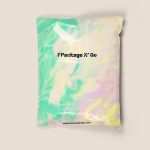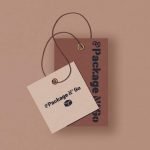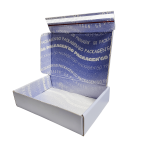Table of Contents
What is a Zip Lock Bag?
A zip lock bag is a versatile type of plastic packaging commonly used for items like clothing, shoes, bags, food, cosmetics, medicines, and more. Its standout feature is the zip-lock closure, which is easy to use, quick to seal, and provides clear visibility of the contents. This design ensures a clean, attractive, and hygienic protection for various products.
What are the Benefits of Zip Lock Bags?
Zip lock bags offer numerous benefits, making them essential in both household and industrial settings:
Reusable: They can be used multiple times, offering a cost-effective and environmentally friendly solution.
Air-Tight Seal: The interlocking mechanism ensures that the contents remain sealed, protecting them from moisture, air, and contaminants.
Transparency: The clear material allows for easy identification of contents without opening the bag.
Space-Saving: These bags are compact and can be stored flat or folded, conserving valuable storage space.
Versatile: Available in various sizes, they are suitable for storing food, organizing small items, or protecting documents.

What are the Uses of Zip Lock Bags?
Zip lock bags have a wide range of uses due to their versatile and convenient design. Here are some common applications:
Food Storage: They help keep food fresh by sealing in moisture and preventing contamination. Ideal for leftovers, snacks, and portioning ingredients.
Organization: Useful for organizing small items like office supplies, craft materials, or travel accessories. They help keep things tidy and easy to find.
Travel: They are handy for packing toiletries, travel documents, or other essentials, keeping items contained and easily accessible.
Clothing Protection: They protect clothing from dust, dirt, and moisture, making them great for storing seasonal garments or packing clothes for travel.
Medical and Cosmetics: They can be used to store medications, first-aid supplies, or cosmetics, keeping them organized and secure.
Hygiene: Ideal for maintaining cleanliness and hygiene, especially for items like diapers, wipes, or sanitary products.
Securing Items: They provide a tamper-evident seal, which is useful for ensuring the integrity of products or preventing accidental spills.

What is a Zip Lock Bag Made of?
Polyethylene (PE)
Polyethylene is a flexible, non-toxic plastic ideal for high-pressure bags and tote bags. It is known for its softness, impact resistance (from -40°C to 90°C), moisture resistance, and good chemical resistance. PE comes in two main types:
Low-Density Polyethylene (LDPE): Molecular weight between 1000 and 3000, offering good impact and heat resistance.
High-Density Polyethylene (HDPE): Molecular weight between 3000 and 9000, known for excellent impact, corrosion, and heat resistance.
Polypropylene (PP)
Polypropylene is a tough, versatile plastic used for high-transparency films, self-sealing bags, and vacuum-formed boxes. It features easy colorability, excellent moisture and chemical resistance, high hinge strength, and strong impact resistance. PP has a high melting point (~100°C) and good thermal stability with a Vicat softening temperature of ~150°C. However, it can be difficult to extrude into complex shapes, is susceptible to UV degradation, and is challenging to bond.
Chlorinated Polyethylene (CPE)
CPE zip lock bags are made from cast film and processed with features like color and anti-static functions. They are available in various colors and are used to meet specific packaging needs.

What Are the Available Sizes of Zip lock Bags?
Zip lock bags come in a variety of standard sizes to accommodate different needs. Some common sizes include:
Small: 4 x 6 inches
Medium: 6 x 8 inches
Large: 9 x 12 inches
Extra Large: 12 x 15 inches
These sizes cover a range of uses from storing small items to larger objects. However, we also offer customization options, allowing you to specify any size to meet your particular needs.
Are Zip Lock Bags Recyclable?
Yes, zip lock bags are recyclable, though they should be clean and dry before being placed in recycling bins. Not all recycling programs accept plastic bags, so it is essential to check with local facilities.
Are There Zip Lock Bags Made of Recycled Materials?
Yes, many zip lock bags are now made from recycled materials, helping to minimize the environmental impact of plastic production. These bags maintain the same durability and effectiveness as those made from virgin materials. We offer a variety of recycled zip lock bags to meet your needs while supporting sustainability.

Are There Biodegradable and Compostable Zip Lock Bags?
Yes, we offer biodegradable and compostable zip lock bags designed to break down more easily in the environment. Made from materials that decompose naturally, these bags are an excellent choice for those looking to reduce their ecological footprint. They offer the same convenience and functionality as traditional zip lock bags, but with the added benefit of being environmentally friendly. By choosing these options, you can help minimize waste and support a more sustainable approach to packaging.
What Are The Factors Affecting the Prices of Zip Lock Bags?
The price of zip lock bags can be influenced by several key factors:
Material: The type of plastic used, such as polyethylene, polypropylene, or biodegradable materials, can affect the cost. Specialized materials or those with environmental benefits may be more expensive.
Size: Larger zip lock bags generally cost more than smaller ones due to the increased amount of material used.
Thickness: The thickness of the bag, which affects its durability and strength, can also impact the price. Thicker bags typically cost more due to the higher material and production costs.
Customization: Options such as custom sizes, colors, prints, or features like zip-lock closures and additional security measures can influence the price. Customization adds to the production complexity and, consequently, the cost.
Order Quantity: Bulk orders usually result in cost savings. Purchasing larger quantities often reduces the per-unit price, making it more economical.

How Are Zip Lock Bags Made?
Raw Material Preparation: Begin by preparing plastic sheets, waterproof zippers, and other auxiliary materials. The choice of plastic sheets depends on the size and intended use of the zip lock bags, ensuring they meet thickness and material requirements.
Film Blowing: This step involves heating plastic granules and blowing them into thin films. Films from new granules are clean and suitable for food packaging. In contrast, films made from recycled granules may require color masterbatch and can exhibit issues like uneven coloring and brittleness, making them less suitable for direct food contact.
Printing: Patterns, text, and other designs are transferred onto the film using methods such as flexographic or gravure printing. Screen printing is another option, though it often requires manual curing.
Bag Making: The printed film is combined with a zipper, then heat-sealed and cut using a bag-making machine to create the final zip lock bags. For screen-printed films, manual curing with tools like electric irons or heat sealers is necessary.
Inspection and Packaging: Finished bags are inspected for quality, then packaged according to customer specifications and prepared for shipping.
Package N’ Go is an excellent supplier of custom zip lock bags, offering a wide range of high-quality, customizable options to meet various needs. With a commitment to superior materials and precise manufacturing processes, Package N’ Go ensures that each bag meets your specific requirements for size, thickness, and design. For more information or to discuss your specific needs, contact us today and discover how Package N’ Go can deliver exceptional value and quality in every custom zip lock bag.











